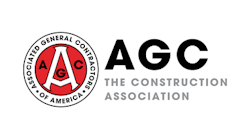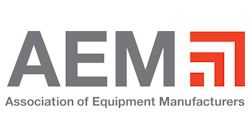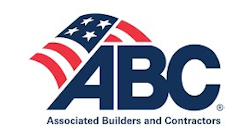We are earthmovers. We use excavators, graders, dozers, loaders, and trenchers to move the earth. Some of our projects cover acres of terrain, but the most dangerous are probably not the biggest jobs but those that involve trenches. There are still too many accidents that cause damage to people and property, often because the contractors want to save money but sometimes because crews have been careless, ignorant, or stupid. Understanding the earth we dig is a basic talent we need for every excavation, big or small. A few months ago, an editorial in this magazine reminded us we needed “dirtmanship.” That’s a practical way to describe that essential talent. Dirt is our friend, and can be our foe if we don’t take the trouble to understand what we are doing and how it will affect the earth that gives us our business and our living.
What is the trench you need to excavate? The answer will dictate the equipment most suited. I checked with trenching experts Vermeer Corp. to find some good answers. If you are laying narrow cable, you can probably use a trencher for the whole process. If the hole or trench to be excavated is more than a couple of feet wide, you’ll probably choose an excavator to do the work. Lines or cables that are less than a foot wide can be laid in a trench that’s 2 feet wide. For trenches of, say, 12-inch or 14-inch pipe, you’ll need a large trenching machine for fast work. If you don’t own one, and this is just a one-time project, renting could be an excellent option. If you are placing pipe and the trench is not very long (often the case for municipal work) the whole job could be done with an excavator and combining a trencher and excavator may be neither productive nor profitable because you’re going to need the excavator for placing the pipe anyway.
With narrow trenches, into which nobody goes to work, the safety concerns are minimal, limited perhaps to the proper use of the trencher or plow. Once the trench becomes wider and deeper, big enough for workers to enter, then the safety aspect of the job is a top priority. Everybody knows that water seeks its own level and flows anywhere to achieve that, but so many people forget that earth likes to move in the same way. We have seen the power of earth and water together in the relentless destruction of mudslides. If we dig a hole in the earth (and that is the nature of our business, isn’t it?) the earth wants to fill it in again.
“It occurs to me that, if you use the equipment correctly, the job will be safely done,” was the opinion of a very young worker digging trenches for new cable at a housing development. He is right. Using a trencher correctly is as sensible as using an excavator correctly. Selecting the right trencher and learning the right way to use it sounds obvious, but too many workers and their bosses still ignore instruction manuals and tips about, for example, the best type of chain for the job they need to do. What is the soil like? In loam, sandy clay or sand, a full-cup cutter setup may be recommended while, for wet clay, a partial cup may be better. Is the ground compacted, or frosty? The best chain setup may be a shark, rotary combo, tiger, or full rotary bit setup. And what if the soil is really rock? Check with reputable trencher manufacturers for their advice. Among those that spring to mind are Vermeer, Ditch Witch, Astec Underground/Trencor, Burkeen, Ground Hog Inc., and TrenchMaster. Both the size of the trench and the soil where it will be dug will dictate your best (and safest) solution, because there are trenchers ideal for the narrowest work, and some that produce results in volumes you might have expected only from a fast excavator. As always, it’s not a bad idea to ask other contractors what equipment they have used successfully, what they recommend, and even what they don’t recommend.
Survival in the Trenches
The trench warfare of World War I was nothing short of horrific. If there can be such a thing, it was war at its worst, with millions of men (the vast majority not professional soldiers) left to die, literally sinking into the mud and many of them never found or identified. It was why it was called “the war to end all wars.” The dangers in a trench today do not come only from bad weather and enemy shells. It is the earth itself that is trying to crush people who dare to enter that territory. The earth is our friend, it is what provides our livelihood; it can also be our foe.
“A primary reason contractors give for not using a protective system like trench boxes (shields) or hydraulic shoring is not that they are careless or ignorant of the dangers, but rather they are just trying to save money,” advises James McRay at Efficiency Production, Inc., based in Mason, MI, and with many years of successful trench protection with their products. “What they may not realize is that trench shields and shoring were developed originally as a production tool, not a safety device. It was in 1971 that Efficiency Production began commercial manufacturing of trench shields, more than 10 years before OSHA dictated that a protective system was required for excavations deeper than 5 feet.”
Contractors realized that it made sense and was more cost-effective to remove as little dirt as possible when they were digging a trench for pipe. The cycle time for the excavator was reduced, the cost of hauling dirt was reduced, and the amount of backfill required after the digging was reduced. “In other words, only dig a trench just slightly wider than the diameter of the pipe,” observes McRay. “That narrow, deep trench is, however, a dangerous place to put a worker. So a simple trench shield services two purposes. It allows the trench to be as narrow as possible and protects workers down in the trench.” An additional consideration, especially if you are thinking only about money when you don’t use a protective system, is the cost of legal damages if an employee is hurt or killed in a trench collapse. Today, apart from any actual costs of accidents in trenches, there is the possibility that a contractor will face criminal charges if he put a worker in an unprotected trench.
As our national infrastructure is improved and repaired, there are excavation jobs up for bid that cannot be completed successfully without trench shoring, for safety’s and efficiency’s sakes. Let’s say your excavation and installation is for a lift station or storage tank. The site is often adjacent to existing buildings or structures, with multiple utilities crossing the path of excavation just to keep you on your toes. Yesterday, such sites were usually protected by tight sheeting that had to be driven or vibrated into the ground with special equipment that was expensive to rent, or done by subcontractors expensive to hire. Today, a system called “slide rail” is being used. It can be used in several configurations, for small four-sided pits or large, unobstructed working pits. Efficiency Production’s Universal Slide Rail can handle those easily and the ClearSpan System can manage large, unobstructed working pits as big as 50 feet by 50 feet. The company’s linear, multi-bay configuration has been successful for installing lengths of pipe up to 40 feet. As the trench or pit is excavated, Slide Rail is installed simultaneously by sliding the panels into integrated rails on the posts. First is the outside slotted rail, and then an open-face rail on the inside. Workers then push the panels and posts down to grade as the pit is dug. This process is often called “dig and push.”
Not all shielding of workers in trenches is done with heavy products. GME is one manufacturer who offers a comprehensive line of lightweight shielding equipment, especially apt for those everyday jobs where you have a short trench and one man working in it. The GME Lite-Shield is made of lightweight aluminum panels that can be transported in a pickup and assembled at the job site in just a few minutes. They are quite strong enough to protect workers in those emergency situations or in projects that are not large enough to require slide rail systems. The vertical shores and end shores from GME will support side walls through the use of hydraulic pressure. They prevent cave-ins and are quick and simple to use. You install vertical shores from the top of the trench and can use them for spot bracing during repairs or for your everyday trenching needs. GME hydraulic shields have light, aluminum sidewalls along with heavy-duty hydraulic struts. The strut contains a hydraulic cylinder and return spring and is itself protected by steel box tubing. Rubber-tired backhoes have been particularly successful in handling these shields and they can protect trenches for several workers.
For Yale University, Giordano Construction Co. Inc. of Bramford, CT, found that shoring from ICON was exactly what it needed for installing utilities. “Exactly” was a key word. “We investigated four methods for the utility construction,” observes Vincent Giordano Jr., vice president of the company. “The first was the open-cut method, but we concluded quickly that this method would not work because Whitney Avenue is a state road set in an urban environment that has heavy vehicle and pedestrian traffic. There are also a number of existing utilities, some of which are over 100 years old. The open-cut method would make us responsible for rerouting the utilities in order to keep them running during the construction process. This presented us with more risk and an extended time on the project, which would lead to increasing the project costs.” Directional drilling and pipe jacking looked appropriate, and it was pilot-tube-guided auger boring technology that offered the best chance of success. (It is a method that is gaining popularity nationwide as an alternative to open-cut solutions.)
Giordano met with ICON, a New Jersey-based slide-rail manufacturer and Bohrtec pilot tube distributor, to develop a plan and site-specific engineering designs. Those engineering designs, drawings, and calculation sheets all had Connecticut P.E. stamps of approval on them and were approved by Yale University, city engineers, and the water-pollution engineers.
“We had very little room for error on this project,” notes Giordano. “The accuracy had to be precise.” The engineering plans required that the construction company place five 16-inch O.D. steel pipes 6 inches apart, side-by-side. There would be only 24 inches above and below the new utility lines within which to work.
They excavated two pits and shored them with Icon’s slide-rail system. A jacking pit was constructed (32 feet long, 16.4 feet wide, and 16 feet deep); into that the Bohrtec guided-auger boring machine would be placed. They also built a receiving pit across Whitney Avenue; that was 11.48 feet long, 16.4 feet wide, and 16 feet deep. The slide rail system also has temporary sheeting, which allowed Giordano to extract small sheeting panels rather than large sheeting panels to create an opening for the pipe installation. “We had very limited space,” says Giordano. “The overhead wires would not allow us to use the standard steel sheeting to shore the lacking and receiving units. The Icon slide-rail systems overcame this obstacle and were easy to install. They also gave us the strength to handle the Bohrtec pilot-tube machine’s jacking forces and to keep our guys safe at the same time. The slide rail systems and guided auger-boring machine provided minimal disruption during the entire process. The 100-year-old pipes were not damaged, and pedestrians and motorists didn’t even know we were there.”
When and Which
Some contractors, wanting to do everything right as they should, ask when they should use shoring or shielding for their trenching projects. OSHA and state regulations determine the “when.” OSHA (federal) has that mandatory 5-foot rule and it is wrong and dangerous to ignore it. In some states those 5 feet have now gone down to 4, so check the local rules for the project you are doing. The phrase “competent person” is also mentioned. That, too, should be taken seriously. A competent person in any earthmoving operation knows what should be done. It is that competent person (not necessarily the owner or oldest worker) who determines if an excavation of less than 4 or 5 feet still requires protection for workers.
Which system is the best? I received some words of wisdom from Steve Schulz of Speed Shore Corp. Speed Shore offers an impressive array of protective systems, including vertical shores, waler systems, rescue systems, excavation braces, Megashores, and Shoring Shields, as well as steel and aluminum trench shielding products such as double-wall shields, steel-framed aluminum shields, aluminum shields, slide-rail systems, Tuff-Lite shields, manhole shields, and Manguard shields. Schulz has decades of good experience with a broad range of protective products. “Many things weigh into the decision by your competent person about the right system for a particular project,” advises Schulz. “The main determination that has to be made is the actual or expected soil classification that the project contains. The soil classification dictates the available protective systems and then other factors must be taken into account. These factors include the lifting capacities of the machines on the job, the allowable soil movement, crossing utilities, surcharge loads that will affect the lateral earth pressure, or loads that could present other dangers, the time the excavation will remain exposed, the presence of groundwater, and other concerns specific to your site.”
“In some cases, the job factors or application do limit the choice of protective systems that will work to provide employee safety,” adds Schulz. “These situations require the help of a professional engineer or a consultant who is well versed and experienced in soils and protective systems. Such jobs usually have a certain condition that will produce a change in the contractor’s original plan for excavation safety and contractors may have to increase the size of the excavator or other equipment to ensure proper, safe work.”
Schulz is not the only expert who regrets that one thing that has changed little over the years is preplanning for the job. This is caused mostly by not paying enough attention to the magnitude of factors mentioned above and the effect they have on job completion and safety. A closer look at protective systems at the planning stage can improve production significantly while providing the safety for employees that the law (or good sense) requires. Some jobs are still bid without due understanding of the protective system required. “All in all, things have become much safer for employees in the last few years,” says Schulz. “That is not to say that thousands of excavations are opened up every day with no provision for employee safety. In my estimation, less than 50% of excavations and trenches have proper protective systems in place. It is better than it was, but we have a long, long way to go.”
Ironically, or coincidentally, only an hour after writing that paragraph, I met an old acquaintance-Dave M.-at a school affair. I hadn’t seen him for some years and often wondered how he was doing. Dave still manages to walk, slowly and painfully with two sticks, and it is very difficult to understand what he is saying. He used to be a loyal baseball fan and coach for the local kids but, about a dozen years ago, he was crushed in a trench by the surrounding soil. It wasn’t a big trench, and there should have been protective shields for Dave working in it. “We just thought a cave-in couldn’t happen to us,” said Dave after the accident. “It was only a small trench for a quick repair. We were idiots.” He still smiles through his pain and inactivity, but what a waste of a good man.
Solutions Readily Available
Talking with the companies which produce trench shoring and shielding systems will lead you not only to the right equipment but also to experts who have years of success in this area of construction. Names that spring to mind are Efficiency Production, Foresight Products, Speed Shore, Icon Group, Trench Shoring Services, GME, and United Rentals Trench Safety. It was, Brian W. Crandall, a civil engineer and president of Icon Equipment Distributors Inc., who gave me these eight reasons for shoring excavations.
- Plan your job and have the right shoring equipment ready for your crew to use, to eliminate delays.
- Avoid costly repair of existing infrastructure.
- Reduce soil removal and replacement costs.
- Reduce Workmen’s Compensation claims.
- Reduce restoration costs.
- Reduce asphalt removal, disposal, and replacement.
- Workers in a safe excavation are more productive.
- Avoid OSHA fines, legal expenses, and possible jail terms.










